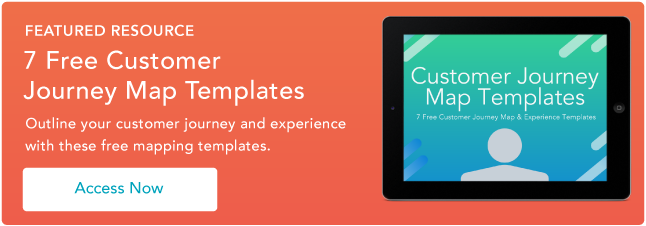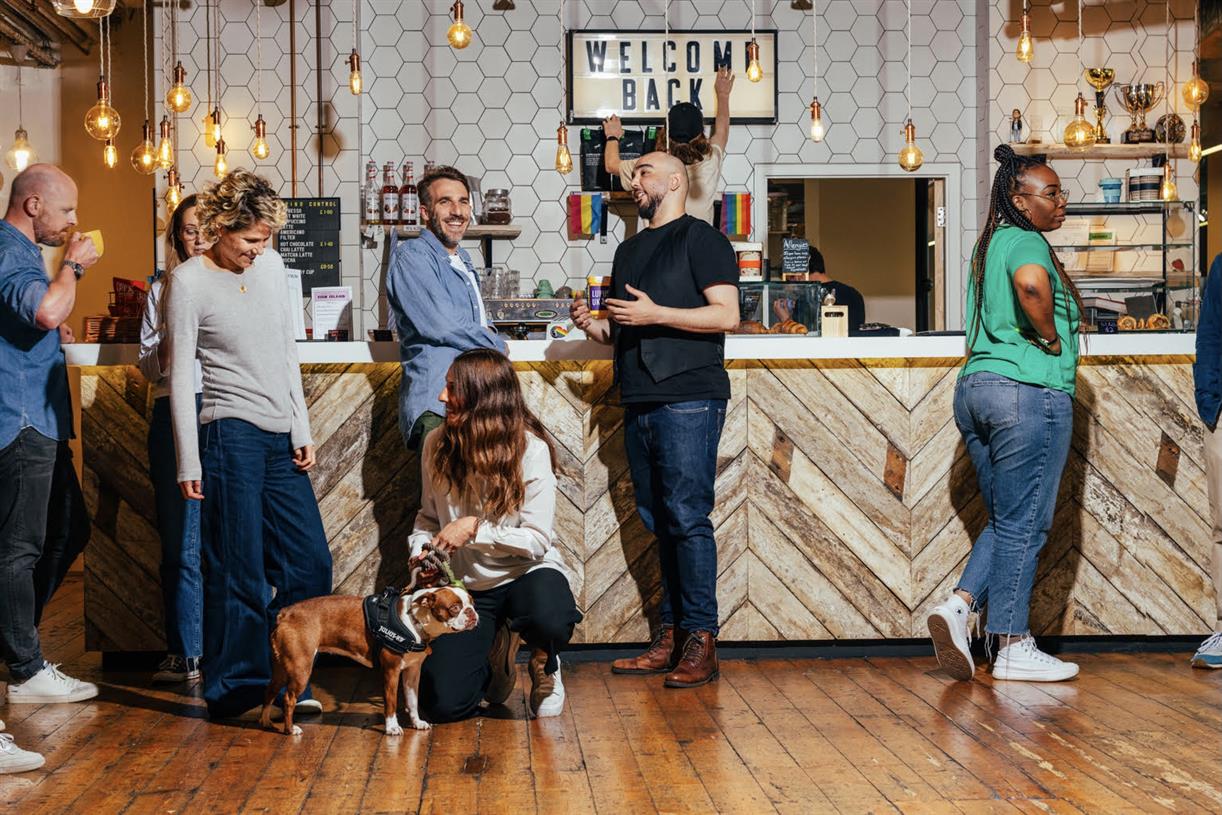Ecommerce Customer Journey Mapping [+ Tips & Template]
An ecommerce customer journey map helps you drive better business results whether you’re an ecommerce business owner or a marketing manager for an online store.
![Ecommerce Customer Journey Mapping [+ Tips & Template]](https://blog.hubspot.com/hubfs/ecommerce-Sep-13-2023-09-08-01-7144-PM.png#keepProtocol)
An ecommerce customer journey map helps you drive better business results whether you’re an ecommerce business owner or a marketing manager for an online store. While ecommerce journeys may be quicker than business-to-business buying cycles, that doesn’t mean they have fewer customer touch points. It’s crucial to understand your buyers’ stages and the touch points that influence each sale. In this guide, I’ll show you how to improve and map your ecommerce company's customer journey. Table of Contents: The ecommerce customer journey traces a shopper's path from product discovery to purchase and beyond. It begins with awareness, moves to consideration where buyers weigh options, and ends with purchasing. Post-purchase experiences — like product usage and support — follow next, fostering repeat purchases and, potentially, brand advocacy. In the awareness stage, customers might hear about your product through social media ads, find it through search engine results, or get word-of-mouth recommendations. Think of shoppers as explorers looking for a promise of something new. As they move into consideration, they become discerning evaluators, comparing prices, reading customer reviews, and envisioning how your product fits into their lives. Upon buying your product at the decision or conversion stage, new customers experience your product's features, enjoy its benefits, and even share it with friends. Your customer service takes over at this point as buyers encounter challenges or have questions related to product usage. Finally, satisfied buyers become loyal customers in the retention stage and then, hopefully, brand advocates in the advocacy stage, spreading the word about your product. The ecommerce customer journey goes beyond tracking clicks. It’s central to decoding the hidden signals that make customers buy. Even after years in marketing, mapping customer journeys remains my go-to process for uncovering invaluable insights into buyers’ behavior, preferences, and pain points. For starters, I have more control of my marketing and sales efforts as each step in a customer’s digital voyage unveils opportunities for optimization and innovation. From the moment they land at an online store to the final checkout process, every interaction shapes their perception, influences their likelihood of return, and cultivates brand loyalty. Analyzing their paths empowers me to address these critical questions: Armed with answers, I can tailor my marketing strategies to fit their experiences, address their concerns, and foster trust. This understanding helps me devise smarter marketing campaigns, personalized product recommendations, and better user interfaces. The takeaway is that an accurate map of your customer journey paves the way to improved conversions, retention, and brand advocacy. Potential customers become aware of problems and start researching to understand them better. In the process, they seek relevant solutions, dispel misconceptions, and consider solutions. For instance, let’s say your shop sells products to help customers get organized and stay on task. If your prospect wants to establish a morning routine, they might start with a casual online search. After browsing through Google and catching sight of social media ads, they consider starting a journal to document their morning routine. During the consideration phase, shoppers weigh various products and strategies to address their needs. Your prospect now has a clearer understanding of their purchase intent and starts vetting potential solutions. They may begin scouring ecommerce platforms like Amazon or even Google for available morning routine journals and evaluating their reviews. In the decision stage, customers compare the features and prices of various options and then narrow down their choices. They weigh benefits against costs, seeking the best value. Ultimately, shoppers will buy your product if it satisfies their needs or desires. For instance, perhaps your journal includes tips to help them establish their new routine. The quality of your products and customer service is crucial to the customer retention stage. HubSpot’s 2024 Consumer Trends Report found the top purchasing factors for consumers include product quality (51%) and past experiences with a product or brand (25%). If your morning routine journal arrives late or poor packaging has led to ripped pages, your customer might not check out your other products. Conversely, positive experiences encourage repeat purchases. To boost retention, you can also employ strategic marketing, using ads retargeting and social media posts to keep products visible to previous buyers. Exposing your products frequently to delighted customers through a consistent, omnichannel presence improves your chances of attracting them to repurchase. Prioritizing customer satisfaction fosters lasting business relationships. Customers at this stage will provide testimonials and advocate for your brand through word-of-mouth and social media endorsements. If you habitually give first-time and repeat customers positive experiences, they’ll return, join your loyalty program, and bring their circle on board, increasing your customer lifetime value. You can deepen your understanding of the ecommerce customer journey with HubSpot Academy’s free Ecommerce Marketing Course. Understanding how the ecommerce customer journey works sets the stage for enhancing your own. In this section, I’ll show you how to use proven engagement principles to convert more customers. Customers who enjoy interacting with you are more likely to journey with your brand. The more you delight customers, the higher your campaigns’ conversion rates and the deeper customers engage with your brand. Here's how to get a sea of happy customers: Pro tip: What delights my customers may not delight yours, so be creative and keep exploring ways to build lasting connections. The fear of missing out (FOMO) is the anxiety of feeling left out from enjoyable experiences others are having. Renowned business psychologist and author Robert Cialdini popularized the idea in his book Influence. FOMO is one of the most potent marketing tools I use across all customer journey stages. You can rouse this feeling in any of these ways: At first, using FOMO may feel uncomfortable because you don’t want to come off as manipulative to buyers. But FOMO is only a tool. It’s how you use it that makes it good or bad. Customers have thanked me for notifying them that a product is on sale or an item they’re interested in will be out of stock soon. Search and market data give me a bird's-eye view of patterns in customer behavior and demographic metrics, but surveys help me get personal with them. Talking to customers online or in person helps unearth insights other data collection methods might miss. I like to use both real-time survey methods — like video or phone calls and in-person or online chats — as well as prerecorded options, such as forms, videos, SMS, website pop-ups, and emails. When I create surveys, I aim to gather information that expounds on what I learned from my initial audience research. I typically ask my customers questions related to why they act or feel a certain way. For example, I may ask: The insights I gather from these questions reveal preferences and patterns among my target audience that will inform my business decisions. For instance, if millennials are willing to spend $500 and boomers $1,500 on my product, I might adjust my offerings and messaging to attract boomers more. Customers have an easier time acting on recommendations and feeling confident when they see they’re not alone. So, I engage the power of social proof. Social proof is where people look to others' actions or opinions to guide their behavior. And it works. Over 20% of consumers (and 36% of millennials) have purchased a product in the last three months based on an influencer’s recommendation. Here’s how I use it: If I can ensure shoppers see that others like my products, it boosts their likelihood of buying from my brand. Nowadays, buyers expect you to call them by name. I go beyond this and create personalized journeys that meet customer needs and expectations using customer data from every touch point. Here’s how I offer personalized experiences: Thanks to HubSpot’s marketing automation software and my customer data, I can deliver unique experiences at scale. (As a HubSpot employee, I may be biased, but I’ve found that this tool is easy to use and can automate virtually any marketing task.) For more tips, I recommend you read this article on customer journey thinking and watch the video below. Now that we understand how the ecommerce customer journey works and ways to make it better, let's bring it to life with a map. An ecommerce customer journey map shows the different steps your customer goes through and helps you plan how to improve each customer touch point. It highlights where they are in the buying process, their goals, and how they interact with your ecommerce store at various stages. Use the ecommerce customer journey template below as your launchpad. Consider your customers’ thoughts, feelings, actions, and research interests to uncover how they arrive at buying decisions. Weigh your ideal customer’s thoughts and motivations across the awareness, consideration, and decision stages. Empathizing with, understanding, and addressing buyers’ expectations and worries helps guide them smoothly throughout the buying process. Let’s assume a prospect is looking to go camping in the winter and exploring my outdoor gear web store for answers: In my experience, customers can move forward from, return to, or repeat a previous stage or drop off the flywheel at any point in their journey. Here’s how it could play out using that prospective customer from the winter gear example: Buyers forage for information from disparate sources before reaching a decision. So, here’s how their research journey will go: Using incentives in your calls-to-action (CTAs) can drive a faster response, and subtle messaging can guide buyers along their path. Going back to the winter camping gear example, here’s what that could look like: Here’s what my map for the winter camping gear example would look like. Here are some tips for building and using your customer journey map: Here’s the takeaway: Mapping your ecommerce customer journey is vital for targeting the right audience and ensuring a great customer experience. Happy customers typically stick around longer and attract more buyers. The best online shopping experiences result from understanding how customers go through the buying stages. Although the ecommerce shopping cycle is swift, customers still interact with multiple touch points before they buy, so you must plan carefully. As a marketer, I rely on data, templates, and proven strategies to optimize each stage of the ecommerce customer journey. Delighting customers, creating a sense of urgency, asking for feedback, showing off happy customers, and personalizing experiences are all proven ways to generate desirable results. In the end, a well-made map of how customers will experience your online shop helps attract more buyers, keep them coming back, and get them talking about your brand. Ready to start? Look below for free templates to map your ecommerce customer journey. Editor's note: This post was originally published in October 2023 and has been updated for comprehensiveness.![How to map your ecommerce customer journey [with template]](https://blog.hubspot.com/hs-fs/hubfs/ecommerce-Sep-13-2023-09-08-01-7144-PM.png?width=595&height=400&name=ecommerce-Sep-13-2023-09-08-01-7144-PM.png)
What is the Ecommerce Customer Journey?
Why is the Ecommerce Customer Journey Important?
Stages of the Ecommerce Customer Journey
1. Awareness
2. Consideration
3. Decision
4. Retention
5. Advocacy
How to Improve Your Ecommerce Customer Journey
1. Improve customer delight.
2. Create FOMO.
3. Conduct surveys.
4. Raise your social proof.
5. Personalize every touch point.
Ecommerce Customer Journey Map
What is the customer thinking or feeling?
What is the customer’s action?
What or where is the buyer researching?
How will we move the buyer along their journey with us in mind?
How to build an ecommerce customer journey map
Creating the Best Ecommerce Customer Journey Possible

 Lynk
Lynk 


































